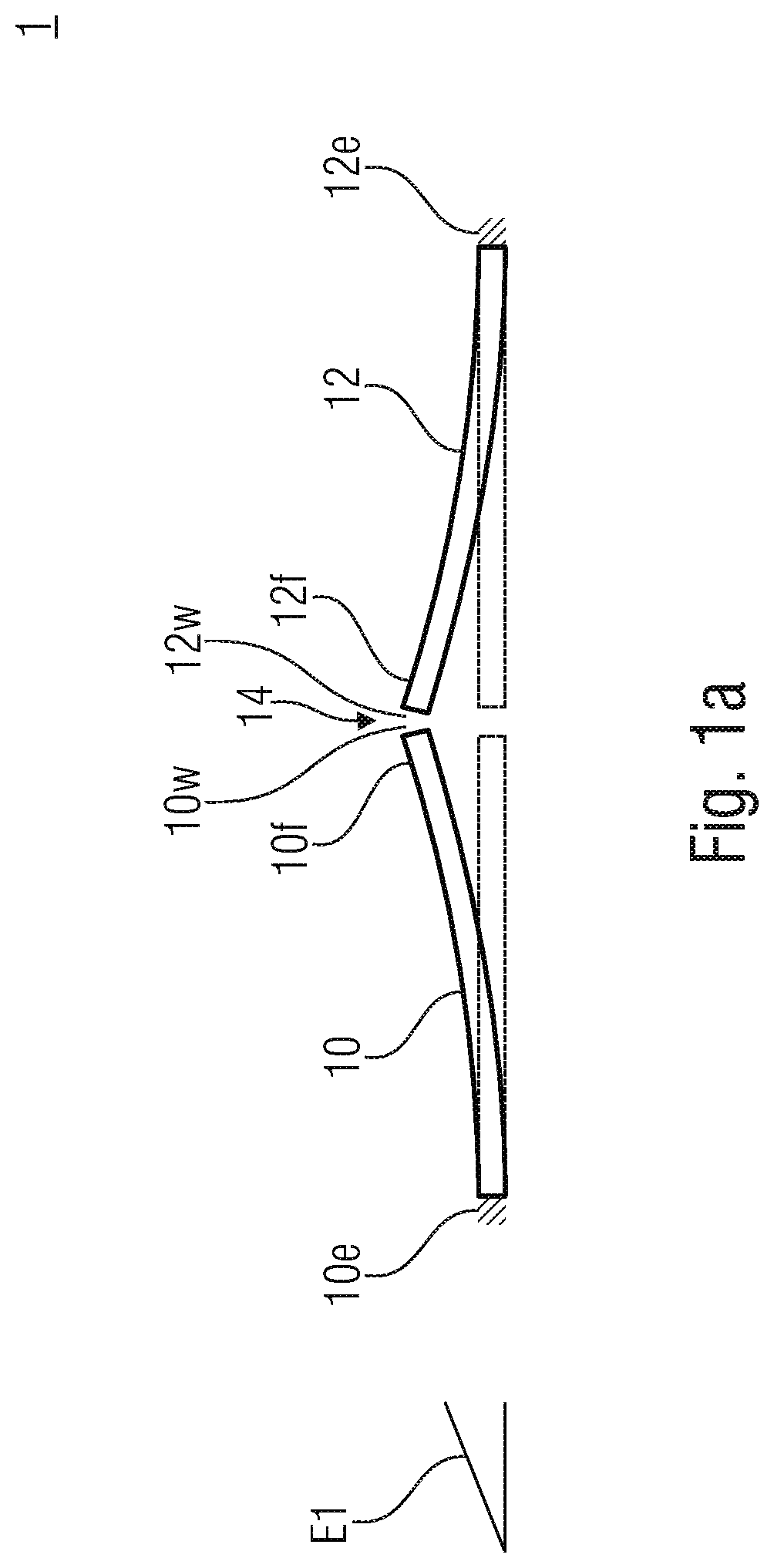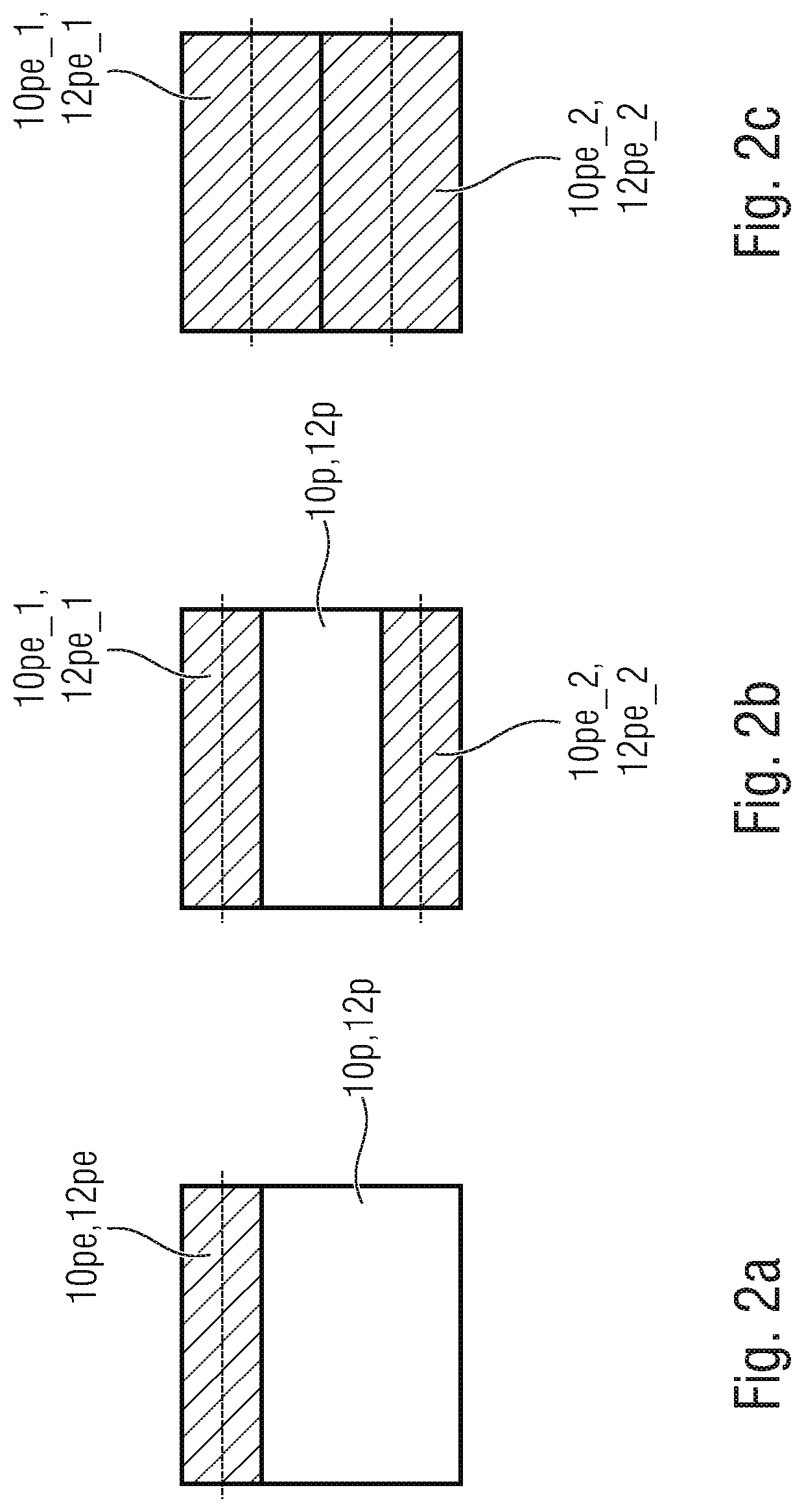Micromechanical sound transducer
a sound transducer and micro-mechanical technology, applied in the direction of diaphragm construction, electrostatic transducers of semiconductor, loudspeakers, etc., can solve the problems of unregulated movement of the membrane, low efficiency, and high power consumption of often times more than one watt, so as to achieve more precise and reliable detection
- Summary
- Abstract
- Description
- Claims
- Application Information
AI Technical Summary
Benefits of technology
Problems solved by technology
Method used
Image
Examples
Embodiment Construction
[0047]Before embodiments of the present invention are subsequently described in more detail based on the drawings, it is to be noted that elements and structures with the same effect are provided with the same reference numerals so that their description is may be applied to each other and may be interchanged with each other.
[0048]FIG. 1a shows a sound transducer 1 with a first bending actuator 10 and a second bending actuator 12. Both are arranged, or clamped in, in a plane E1, as can be seen based on the clampings 10e and 12e. The clamping may be realized by the bending actuators 10 and 12 being etched out from a mutual substrate (not illustrated) so that the bending actuators 10 and 12 are connected to the substrate on one side, and by a (mutual) cavity (no illustrated) being formed below the actuators 10 and 12. At this point, it is to be noted that the illustrated bending actuators 10 and 12 may be biased, for example, so that the illustration either shows an idle state or a de...
PUM
 Login to View More
Login to View More Abstract
Description
Claims
Application Information
 Login to View More
Login to View More - R&D
- Intellectual Property
- Life Sciences
- Materials
- Tech Scout
- Unparalleled Data Quality
- Higher Quality Content
- 60% Fewer Hallucinations
Browse by: Latest US Patents, China's latest patents, Technical Efficacy Thesaurus, Application Domain, Technology Topic, Popular Technical Reports.
© 2025 PatSnap. All rights reserved.Legal|Privacy policy|Modern Slavery Act Transparency Statement|Sitemap|About US| Contact US: help@patsnap.com



